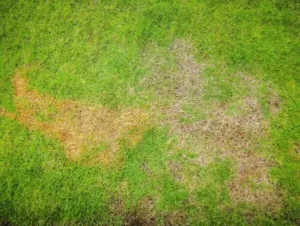Your Guide to the Armyworm and How To Deal With An Infestation

Australia is home to many thousands of different species of creepy crawly. Some are harmless, others are pests, while some can actually cause damage to plants and crops. In this article we’ll be focusing on the armyworm, discovering just what they are, symptoms of an attack, how to identify the armyworm, and putting in place measures to prevent an armyworm infestation as well as combating an armyworm invasion.
So, let’s discover more about Australia’s armyworm so you are better equipped to fight this critter if an army of them decide to invade your land!
Symptoms of An Attack By Armyworms
All manner of creatures can invade Australian gardens, lawns and farms, from snails to locusts and countless other invasive pests. So how do you identify if you are encountering a problem with armyworms in particular?
When it comes to identifying an armyworm infestation in your lawn, their presence is often given away by small dark brown patches of grass. Armyworms love to roam under the cover of darkness, so their physical presence is not always so obvious during the daytime. Another clue when it comes to grass is a transparent look to the leaves, as armyworms often devour just the green layer of the blades.
A dead or dying lawn
Entire lawns can be destroyed in a matter of days with a severe infestation of armyworms.
A common indicator of armyworm presence in crops, such as corn and plants with larger leaves, is a series of matching holes all in a row.

Another way to detect the presence of armyworms is by identifying their eggs, which resemble small white globules clumped in groups on the leave of plants.
What Is the Armyworm?
Essentially armyworms are caterpillars. They love grassy pastures, gardens, vegetable patches and the like. They are also particularly fond of cereal and rice crops. The armyworm has a voracious appetite, and when you get an infestation of them, they can devour and destroy crops and vegetables in no time flat.
The armyworm is a widespread problem right across Australia, and nowhere in the country is immune to possible armyworm issues. There are three common species found in the country, and they are:
- Common Armyworm
- Southern Armyworm
- Inland Armyworm
Although they are most active and cause the most damage during autumn and winter, the armyworm can also be a real pest in spring when they eat the newly sown seeds. Rice crops are most affected in summer months when the worms eat through the stems of the rice stalks and lop off the head of the plant.
Upon reaching adulthood, armyworms transform into moths. These moths grow a wingspan of about 40mm and are tan to light brown in colour. Each fore wing has a tiny white spot centred on it.
Identification of Armyworms
So what does an armyworm look like?
As mentioned earlier the armyworm in actually a caterpillar, so they have a series of tiny legs on which to move about. The head is really small in comparison to the rest of the body, and they tend to be identified by three white stripes across their backs, with the rest of the body tending to be a dark brown colour.

Image from http://agriculture.vic.gov.au/
Depending on the species, armyworms can grow anywhere from 2mm to 40mm in length. Differing to other breeds of common caterpillar, armyworms have no obvious hairs and are smooth to the touch. They also curl up into a tight ball when prodded.
As the name suggests, armyworms hunt in massive packs, marching through pastures and destroying everything in their path with an insatiable hunger that’s rarely quenched.
What Causes An Armyworm Infestation?
There can be a number of reasons for an armyworm infestation. The most obvious cause is over-breeding due to a lack of armyworm prevention and control. Armyworms can breed rapidly and in great numbers.
When there is a large conglomeration of armyworms in a particular location, the battalion can quickly chew through all available food, leaving them no choice but to search out new and greener pastures. Once they’ve destroyed crops they’ll march out as a whole to hunt for new food. This V-shaped formation gives them the name “armyworm”, as they appear to be marching, and in great numbers.
Essentially armyworms feed on green leaf material and will go to any lengths to satisfy their hunger.
Rain and cooler weather can also lead to increased breeding of armyworms, thus amplifying the problem.
How To Get Rid of Armyworms
There are a number of effective methods to eradicate the armyworm. A very natural and effective way is to have chooks in your yard or on your property. Hens and roosters love feeding on worms and grubs and they’ll reduce those armyworm numbers in very quick time.
Insect killer granules and sprays are another effective way to eradicate armyworms, as well as insect killing remedies for spot treatment of smaller problem areas.
One of the most effective treatments of all for eliminating armyworms is Eco-Neem Concentrate, which is a registered organic pesticide specifically designed to combat caterpillars, grubs and all leaf munching insects. In fact, it’s effective against more than 200 species of pest.

It’s derived from the pure extract of the need seed in a vegetable oil base. What Eco-Neem Concentrate does is prevent the armyworm from moulting, thus halting its lifecycle. It also prevents the grubs from wanting to feed, leading to their starvation.
Learn more about this effective armyworm control product.
The Takeaway
Once you learn how to identify armyworms, you can put in place measures to prevent an infestation of these invasive critters, as well as arm yourself with environmentally friendly products to cure the problem.









 Mosquito Traps
Mosquito Traps